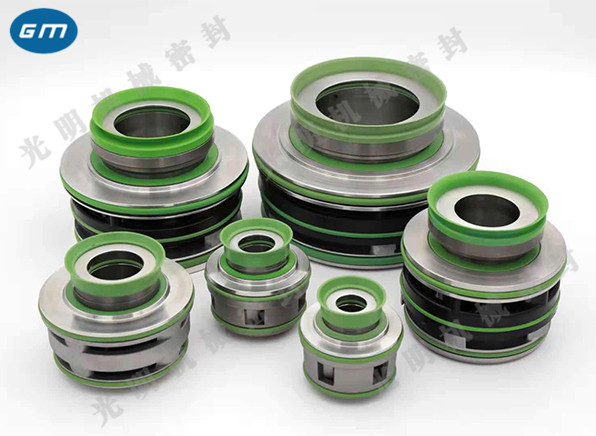The mechanical seal is a mechanical part used to seal the rotating shaft and the stationary pump chamber. The sealed part is a cylindrical area, the shaft in the equipment rotates and penetrates inside and outside the equipment, and the body part is still and full of fluid medium inside. Driven by pressure difference, concentration difference and temperature difference, fluids inside and outside the equipment exchange with each other; "Sealing" means to control the fluid exchange between internal and external areas, so that there is "no leakage" at the interface. Bucht explained in his book Industrial Sealing Technology that mechanical seal is a combined mechanism composed of a series of simple design elements, and the sealing function is completed by two main sealing rings with planes to prevent leakage. One seal ring rotates together with the shaft, and the other seal ring is fixed on the housing. In order to seal the centrifugal pump shaft, the static seal ring is installed on the gland of the seal chamber. During the rotation of the pump shaft, the sealing surface of the sealing ring installed on the shaft rubs against the opposite static ring sealing surface. The contact between these two sealing contact surfaces acts like a bearing and is subject to wear. Any form of system leakage must pass through this sealing contact surface. The axial force keeps the seal ring in frictional contact all the time. Its source can be mechanical or hydraulic. In many designs, the sum of the two is taken. This stable contact can prevent leakage from friction surfaces or reduce the leakage to a small amount.

Mechanical seal can be divided into pump seal, kettle seal, compressor seal, etc. according to the classification of applied host. Pump seals include various centrifugal pumps, vortex pumps, screw pumps, internal combustion engine cooling water pumps, marine pumps, etc; Seals for cauldrons include mechanical seals for various stainless steel cauldrons, enamel cauldrons, glass lined cauldrons, etc. The principle of cauldron seal is the same as that of pump seal, but cauldron seal has some characteristics: the following part is excerpted from Hao Muming's book Mechanical Seal Principle and Application. The sealed medium on the top of the kettle (top stirring) is gas, which is liquid only when the kettle is full; The mixing shaft is relatively long, the swing and vibration of the shaft are relatively large, and the dynamic and static rings often cannot fit well, so it is generally necessary to add bottom bearings or intermediate bearings; Large size, heavy parts, difficult disassembly and replacement, assembly and adjustment; Compared with the seal for pump, it has low speed, low PV value, and easy to select the material of dynamic and static rings. Pump seals generally have high rotating speed, high pressure, high PV value and large heat generation. The difficulty of sealing is how to form a stable lubricating film mode. In brief, the pump seal is fine, and the kettle seal is leather and anti molding.











